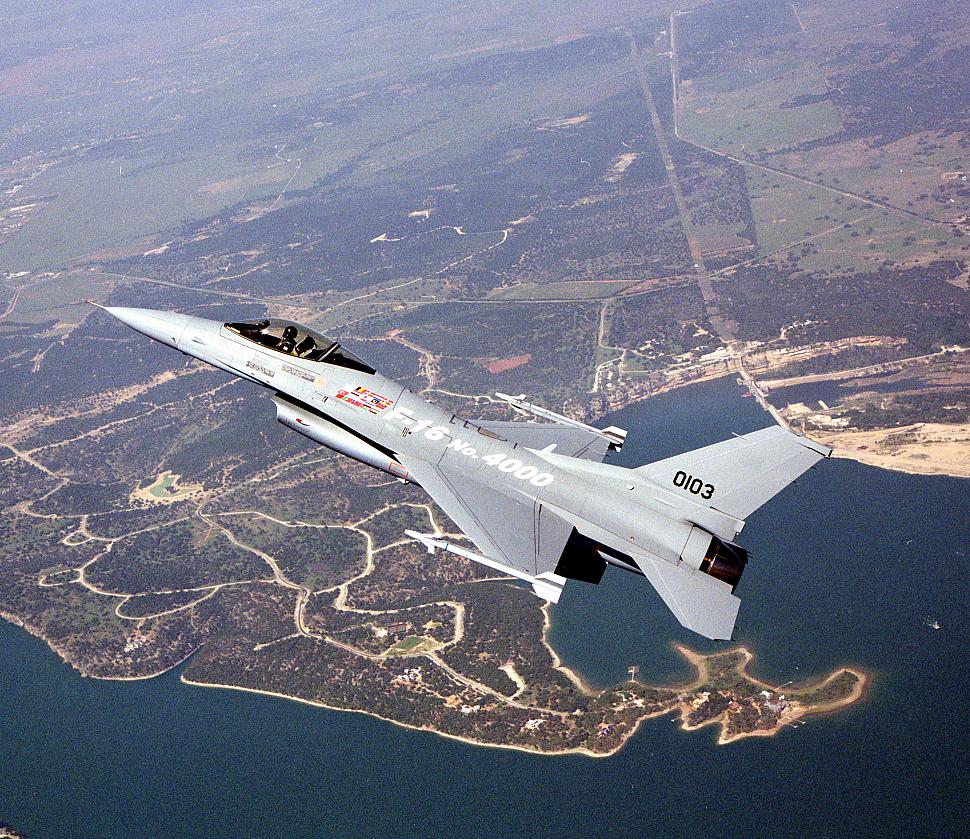F-16 Reference
Site missing

|
F-16 Fleet ReportsF-16 fleet status over the years |
Data
This graph shows the current status of the worldwide F-16 fleet. This includes - amongst others - the active inventory, attrition and scrapped / stored airframes. It also illustrates the historical evolution of the F-16 fleet. It only includes aircraft that have been active (or still are active) - meaning aircraft on order or canceled orders are excluded from this graph.
Disclaimer: This report is generated in real-time from our F-16 Aircraft Database. We strive to keep our database up-to-date and complete, nevertheless for some countries data is hard to verify (e.g. accuracy for the Middle East is only 90%). Please contact us if you have any questions or feedback.
- Horizontal Axis: Years
- Vertical Axis: Number of F-16 aircraft
- Series: Aircraft status: Active, Stored, Preserved, Instructional Airframe, Write-off, Scrapped
Click on the color labels to disable/enable series; click on the zoom icons to zoom in (+) or out (-). Click on the full screen icon to display the graph full screen.
AnalysisThe F-16 fleet status graph shows the "S-curve" pattern typical for any product introduction. For the F-16, early adoption was in the early 1980s, followed by mass deployment in the '80s and '90s and finally production slow-down in the past decade.In the early years only a small number of aircraft were produced, only accounting for the prototypes and the pre-production models. The massive build-up between 1979 and 1982 accounted almost solely for the EPAF countries. Production has slowed down over the past years with Greece receiving their final batch (2009) and Pakistan, Turkey and Morocco set to receive theirs over the next few years. Currently total F-16 production (at the time of writing - February 2010) stands at 4,427 airframes. The 1,000th Fighting Falcon rolled off the production line in 1983 and subsequent milestones were reached in 1987 (2,000th), 1991 (3,000th), and 1999 (4,000th). It is highly unlikely that production will ever reach 5,000, as there are currently less than 100 aircraft in the order books and production has slowed to 2 airframes per month. The main cause for active inventory reduction is attrition. The first F-16 aircraft became operational in 1979 (96 aircraft) and that same year two aircraft were written off (note that this attrition only shows up in 1980, since the aircraft were active for at least part of 1979). To date, 533 F-16s have been written off, accounting for a significant part of the F-16 fleet. The second largest cause for active fleet reduction is aircraft being retired. There are two obvious causes for retirement: first of all, in the mid-nineties the first F-16s were reaching the end of their service life. Second, after the fall of the Berlin Wall, a number of countries wanted to cash in on the "peace dividend" and decided to reduce their active fleet. Both Belgium and the US started to move their oldest F-16s into storage in 1994/1995 resulting in up to 400 airframes being withdrawn from use in those years. Retired aircraft are either scrapped (if the airframe is spent), used as instructional airframes (for ground crew instruction), preserved in museums or as gateguards, or mothballed & stored. Note that sometimes aircraft are brought out of storage and sold second hand, as was the case in 2002-2003. |
|
Visitor Comments
Note: Errors and omissions in the above text can be added here. Please note: your comments will be displayed immediately on this page.
If you wish to send a private comment to the webmasters, please use the Contact Us link.

